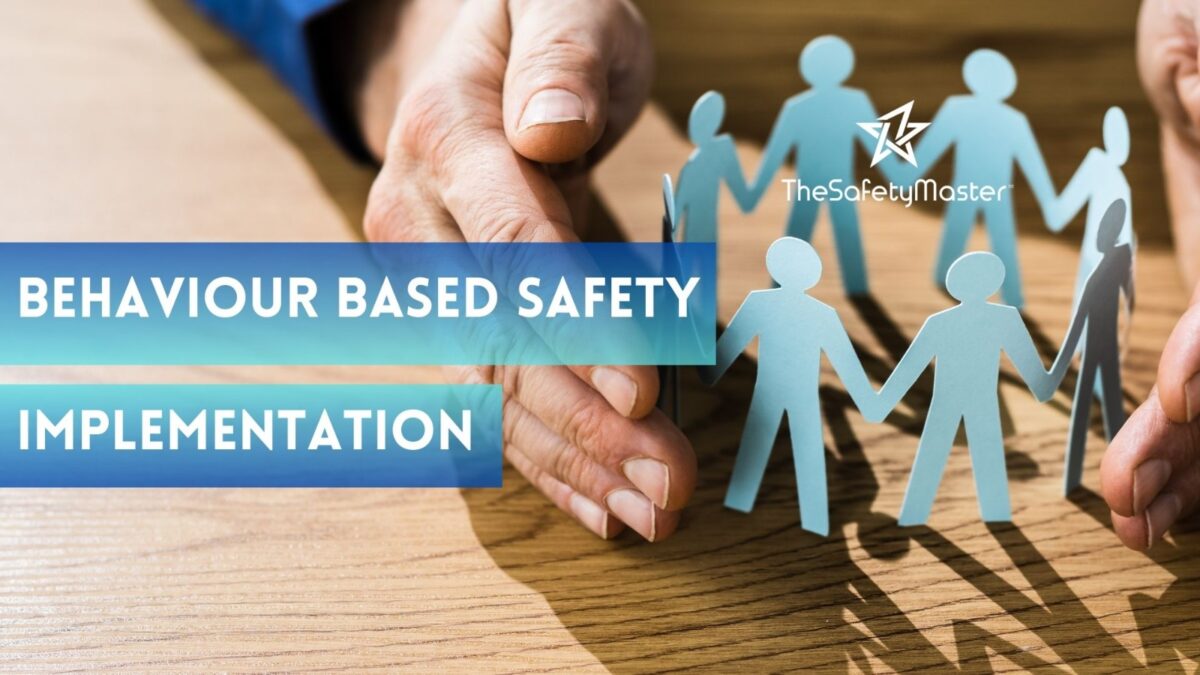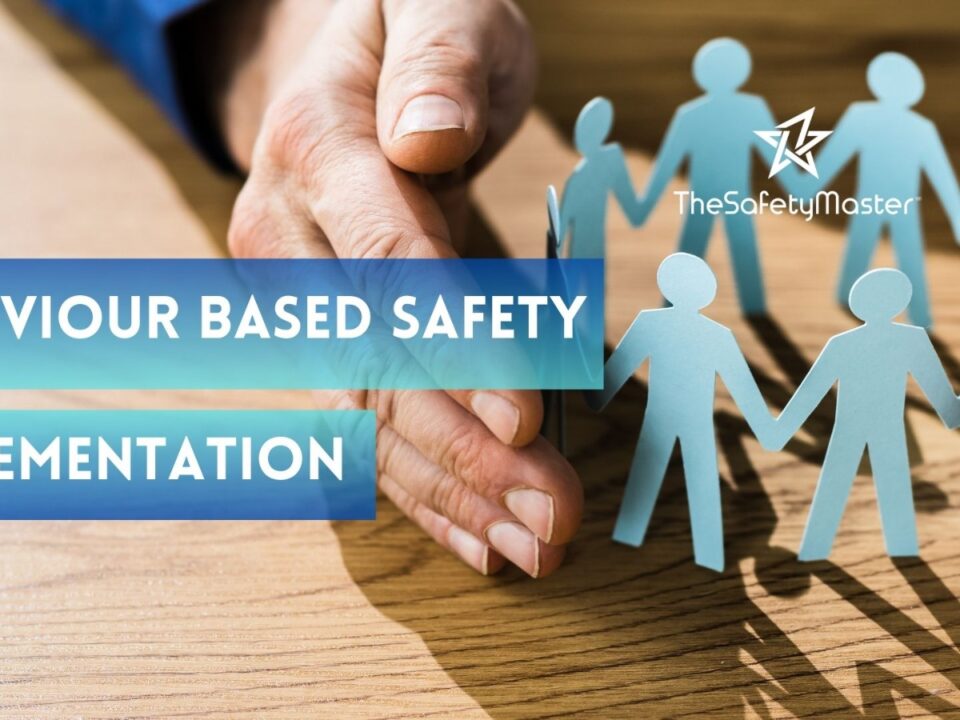The Link Between Behaviour And Accidents: How BBS Implementation Can Reduce Incidents
Exploring the Key Elements of BIS14489 Safety Audits: A Roadmap to Industry Excellence
November 9, 2023
Hazop Study by TheSafetyMaster
December 18, 2023In this article, we delve into a critical issue that businesses across all industries face: the link between behavior and accidents. It is no secret that human behavior plays a significant role in workplace incidents, resulting in injuries, property damage, and even loss of life. But how can organizations effectively address this issue and reduce such incidents? Enter BBS implementation – a powerful tool that can transform safety culture and mitigate risk. Join us as we explore the fascinating world of Behavior-Based Safety and discover how its implementation can prove to be a game-changer for your organization. Get ready to unlock invaluable insights, practical strategies, and a safer future for your workforce. Read on, because your employees’ safety matters!
Introduction
The Link Between Behavior and Accidents: How BBS Implementation Can Reduce Incidents. Accidents can be devastating, causing harm to individuals and significant disruptions in various settings. Whether in the workplace, on the roads, or even within our homes, accidents are an unfortunate reality of life. However, what if we told you that there is a way to significantly reduce the occurrence of accidents? In this article, we will explore the fascinating link between behaviour and accidents and how implementing Behaviour-Based Safety (BBS) can help mitigate risks
Understanding the Link between Behaviour and Accidents
Understanding the Link between Behaviour and Accidents: In unravelling the intricacies of workplace accidents, it becomes evident that behaviour plays a pivotal role in their occurrence. Human behaviour encompasses a wide spectrum of actions, decisions, and responses exhibited by individuals within a given context. Within the realm of occupational safety, behaviour can either be a catalyst for accidents or act as a powerful mitigating force.
Accidents seldom occur in isolation; they are often preceded by specific behaviours that increase the likelihood of an incident. These behaviours can range from complacency and shortcuts to inadequate risk assessments and failure to follow safety protocols. Understanding how behaviour influences accident causation is crucial in developing effective strategies to minimize incidents and promote a safer work environment.
By delving into behavioural factors contributing to accidents, organizations can gain valuable insights into patterns and trends that underlie unsafe practices. It allows them to identify commonalities among individuals or departments with higher accident rates, aiding in targeted interventions. Moreover, recognizing that behaviour is not solely dependent on individual characteristics but is also influenced by organizational culture provides an opportunity for comprehensive change.
Promoting awareness about the link between behaviour and accidents empowers both employers and employees to take ownership of their actions and make informed choices regarding safety practices. By fostering a culture where safety is prioritized at every level, organizations can create an environment conducive to accident prevention. Ultimately, understanding this link helps pave the way for successful implementation of Behaviour-Based Safety (BBS) programs aimed at reducing incidents through proactive behavioural interventions.
By highlighting the importance of behavioural factors in accident causation, organizations can shift their perspectives from merely reacting to incidents after they occur towards actively modifying behaviours beforehand
Exploring the Role of BBS (Behaviour-Based Safety) in Reducing Incidents
Exploring the Role of BBS (Behaviour-Based Safety) in Reducing Incidents: Through the implementation of Behaviour-Based Safety (BBS), organizations can effectively tackle the underlying causes of accidents and foster a safer work environment. BBS focuses on understanding and modifying employee behaviour through proactive observation and feedback systems. By identifying unsafe behaviours and reinforcing safe practices, BBS aims to address the root causes of incidents rather than solely relying on reactive measures.
This approach recognizes that human behaviour plays a critical role in accident prevention. By promoting a culture of accountability, BBS encourages employees to take ownership of their actions and actively participate in creating a safer workplace. It emphasizes the importance of individual choices, attitudes, and habits in shaping overall safety outcomes.
BBS not only helps identify unsafe behaviours but also offers valuable insights into organizational processes, training needs, and environmental factors that contribute to accidents. With this comprehensive understanding, organizations can implement targeted interventions that address specific risk areas. By fostering continuous improvement through data-driven analysis and feedback loops, BBS empowers employees at all levels to actively contribute to accident reduction efforts.
Remember: Each day brings an opportunity for progress through BBS implementation. By harnessing the power of behavioural science, organizations can create a harmonious synergy between individuals’ actions and safety goals—ultimately paving the way towards a brighter future with fewer accidents and increased well-being for all employees.
Benefits of Implementing BBS in the Workplace
Benefits of Implementing BBS in the Workplace: By implementing a Behaviour-Based Safety (BBS) program in the workplace, organizations can experience a wide range of benefits that contribute to overall safety and productivity. Firstly, BBS fosters a proactive approach to safety by focusing on identifying and addressing unsafe behaviours before they lead to accidents. This empowers employees to take ownership of their own safety and encourages them to make safer choices consistently.
Furthermore, BBS implementation promotes a positive safety culture within the organization. When employees see that their organization values their well-being and actively seeks their input on safety matters, it creates a sense of trust and engagement. This leads to improved morale, increased job satisfaction, and ultimately higher productivity levels. Employees feel motivated to actively participate in the BBS process, which further promotes a sense of teamwork and camaraderie among colleagues.
Additionally, implementing BBS in the workplace helps organizations reduce incident rates significantly. By systematically observing and documenting employee behaviours, potential risks are identified early on. Through analysis of these observations, interventions can be developed and implemented effectively. This targeted approach directly addresses risky behaviours while reinforcing safe practices. As a result, incidents are minimized, leading to reduced injury rates and associated costs for organizations.
Overall, implementing BBS in the workplace not only enhances safety but also improves employee well-being and boosts organizational performance. By placing emphasis on proactive measures rather than reactive responses after accidents occur, organizations create an environment where workers feel valued and motivated to prioritize their own safety as well as the safety of others around them
Key Components of a Successful BBS Program
Key Components of a Successful BBS Program: An essential element of a successful Behaviour-Based Safety (BBS) program lies in establishing clear objectives and goals that align with the organization’s overall safety strategy. These objectives serve as the foundation upon which all other components of the program are built. By setting specific targets, such as reducing accident rates by a certain percentage or increasing employee engagement in safety initiatives, organizations can drive focused efforts towards achieving these goals.
Another vital component is effective leadership commitment and involvement. Leaders must not only endorse the BBS program but actively participate in its implementation. Through their visible support, leaders create a culture where safety becomes a top priority for every employee. When leaders consistently model safe behaviours and provide resources for training and implementation, it fosters a sense of trust and motivation among employees to embrace the program.
Training is also crucial in ensuring the success of a BBS program. Employees need to understand the purpose, benefits, and expectations associated with behavioural observations. Training should cover not only how to conduct observations effectively but also emphasize the importance of providing constructive feedback and recognizing positive behaviours. By equipping employees with knowledge and skills, they become active participants who can identify unsafe behaviours, make recommendations for improvement, and collectively contribute towards creating safer work environments.
A well-designed reward system can further enhance engagement and sustain momentum within the BBS program. Recognizing individuals or teams for consistently practicing safe behaviours or actively contributing insights during behavioural observations encourages continuous improvement while fostering healthy competition among employees. Rewards can range from public acknowledgments to tangible incentives that reinforce positive safety habits.
By implementing these key components within their BBS programs, organizations create an environment where safety becomes ingrained into daily operations
Assessing and Analysing Behavioural Factors Contributing to Accidents
Assessing and Analysing Behavioural Factors Contributing to Accidents: In delving into the realm of behaviour-based safety, it becomes crucial to thoroughly assess and analyse the intricate web of factors that contribute to accidents. The first step is to gather comprehensive data on incident reports, near-misses, and other indicators of unsafe behaviours. By scrutinizing these incidents, patterns begin to emerge, revealing the underlying behavioural factors that drive accidents.
To conduct a thorough analysis, it is necessary to examine various aspects such as worker attitudes, decision-making processes, skill levels, and adherence to safety protocols. By considering these multifaceted elements in concert with one another, a clearer picture can be painted regarding why accidents occur. This analysis not only helps identify individual behaviours that contribute to incidents but also sheds light on systemic issues within an organization.
Moreover, an optimistic perspective must be adopted when assessing behavioural factors contributing to accidents. Rather than focusing solely on assigning blame or reprimanding employees for their actions or lack thereof, organizations should view this process as an opportunity for growth and improvement. By fostering a culture of open communication and learning from mistakes, employees will feel empowered to contribute their experiences and insights toward creating a safer work environment for all.
Remember: understanding the behavioural factors driving accidents serves as a foundation upon which effective intervention strategies can be built. With this knowledge in hand, organizations can implement targeted measures aimed at reducing unsafe behaviours and promoting a culture of safety. It is through this proactive approach that positive change can occur within workplaces worldwide
Designing and Implementing Effective Behaviour Observation Systems
Designing and Implementing Effective Behaviour Observation Systems: In formulating an effective behaviour observation system, organizations must focus on creating a structured framework that captures critical behavioural data. A thought-provoking approach is to incorporate interactive digital platforms that allow real-time data entry and analysis. These systems can leverage advanced algorithms to identify patterns, trends, and areas of concern promptly. Additionally, the integration of mobile technology can enable employees to report observations effortlessly, promoting a culture of constant vigilance.
To ensure the success of behaviour observation systems, it is imperative to involve employees at various levels. This can be achieved through comprehensive training programs that highlight the importance of accurate and consistent reporting. Encouraging open communication channels between supervisors and workers fosters trust and active involvement in the process. By empowering employees as agents of change rather than passive observers, organizations cultivate a positive safety culture where everyone feels valued and accountable for maintaining a secure work environment.
By embracing innovative techniques such as wearables or sensors, behaviour observation systems become more robust in capturing nuanced details about employee behaviours throughout their workday. These technologies offer an optimistic outlook by providing organizations with rich datasets for analysis and identifying areas where targeted interventions can make a significant impact on accident prevention efforts. With these advancements, implementation becomes not just a compliance-driven exercise but an opportunity for continuous improvement towards achieving safety excellence.
Training and Engaging Employees in BBS Processes
Training and Engaging Employees in BBS Processes: To ensure the successful implementation of a Behaviour-Based Safety (BBS) program, it is imperative to provide comprehensive training to employees. This training should not only focus on the principles and goals of BBS, but also emphasize the importance of individual responsibility in creating a safe work environment. By imparting knowledge about the link between behaviour and accidents, employees gain a deeper understanding of their role in accident prevention.
One effective method to engage employees in BBS processes is through interactive workshops and hands-on exercises. These activities encourage active participation and foster a sense of ownership among employees. By involving them in scenario-based simulations, role-plays, and group discussions, they can develop practical skills for identifying at-risk behaviours and implementing corrective actions.
Furthermore, incorporating incentives into BBS training programs can enhance employee motivation and participation. Recognizing individual efforts through rewards such as certificates, bonuses, or public acknowledgments boosts morale and encourages continuous improvement. By instilling a positive mind-set towards safety within the workforce, organizations can create a culture where employees feel empowered to actively contribute towards accident reduction.
Remember: Engaging employees through targeted training programs not only equips them with the necessary knowledge but also inspires them to become safety advocates in their daily work routines. When individuals are motivated by their own well-being as well as that of their colleagues, accidents become fewer and far between – leading to happier, healthier workplaces for all involved.
Establishing a Positive Safety Culture through BBS
Establishing a Positive Safety Culture through BBS: Building a strong safety culture is crucial in reducing accidents and promoting a safe work environment. Implementing Behaviour-Based Safety (BBS) provides an excellent framework for cultivating this culture. By focusing on individual behaviours and their impact on safety, BBS empowers employees to take ownership of their actions and make conscious choices that prioritize safety.
To establish a positive safety culture through BBS, it is essential to foster open communication channels. This includes creating platforms for employees to share their experiences, concerns, and suggestions related to safety. Encouraging active participation in safety discussions not only enhances employee engagement but also fosters trust and transparency within the organization.
Another vital aspect of building a positive safety culture is recognizing and rewarding safe behaviours. Emphasizing the importance of safe actions through incentives, acknowledgments, or even simple verbal appreciation can go a long way in motivating employees to consistently prioritize safety. Celebrating success stories where individuals have made significant improvements in their behaviour can inspire others to follow suit.
Ultimately, establishing a positive safety culture through BBS requires consistent reinforcement of safe practices at all levels of the organization. This includes providing ongoing training opportunities, regularly reviewing policies and procedures, and continuously evaluating the effectiveness of the BBS program. By doing so, organizations can create an environment where every employee feels empowered to make safe choices daily—a transformative shift that leads to reduced accidents and increased well-being for all.
Measuring the Effectiveness of BBS Implementation
Measuring the Effectiveness of BBS Implementation: To truly gauge the effectiveness of Behaviour-Based Safety (BBS) implementation, organizations must employ a comprehensive set of metrics that capture both quantitative and qualitative data. One crucial metric is the frequency and severity of accidents before and after BBS integration. By tracking this data, organizations can assess whether incident rates have decreased over time, indicating a positive impact on safety culture.
Another important measure is employee engagement in BBS processes. This can be evaluated through surveys, interviews, or focus groups to understand if employees perceive BBS as valuable and if they actively participate in behaviour observations and reporting. High levels of engagement often correlate with improved safety performance as individuals take ownership of their own behaviours.
Furthermore, organizations should analyse near-miss reporting rates to evaluate whether employees are more inclined to report potential incidents after BBS implementation. An increase in near-miss reporting indicates a proactive safety mind-set among workers who are now more vigilant in identifying potentially hazardous situations.
By gathering and analysing such data points, organizations can determine the extent to which their BBS program has influenced overall safety improvement. Positive outcomes will not only reinforce the effectiveness of BBS but also highlight areas for further enhancement, leading to continuous growth in accident prevention efforts
Overcoming Challenges in Implementing BBS: Navigating resistance and scepticism:
Implementing a Behaviour-Based Safety (BBS) program may encounter resistance or scepticism from employees who are resistant to change or apprehensive about surveillance. However, by fostering open communication channels and emphasizing the positive impact on their safety and well-being, organizations can address these concerns effectively. Educating employees on the benefits of BBS, such as reduced incidents, improved morale, and increased productivity, can help create a sense of collective responsibility towards safety.
Sustaining employee engagement:
Maintaining long-term employee engagement in a BBS program can be challenging. To overcome this hurdle, organizations should foster a culture that encourages active participation through regular training sessions, workshops, and feedback mechanisms. Celebrating successes and recognizing individuals or teams for their contributions to creating a safer work environment can also bolster engagement. By consistently promoting the value of BBS and its correlation with incident reduction over time, employees will develop a sense of ownership in maintaining safe behaviours.
Adapting to organizational dynamics:
Organizational dynamics may pose challenges during the implementation of BBS programs. Clear communication across all levels is crucial to ensure that leadership supports the initiative wholeheartedly. Additionally, adapting the program to meet specific organizational needs is essential for success. This involves aligning BBS principles with existing safety protocols and integrating it seamlessly into daily operations rather than treating it as an isolated program. By closely collaborating with all stakeholders and customizing approaches based on unique organizational factors, companies can optimize their chances of overcoming challenges in implementing BBS.
By acknowledging these challenges proactively and adopting strategies to address them head-on, organizations pave the way for successful implementation of Behaviour-Based Safety programs
Case Studies: Successful BBS Implementation and Accident Reduction
Case Studies: Successful BBS Implementation and Accident Reduction in the realm of workplace safety, the implementation of Behaviour-Based Safety (BBS) programs has proven to be a transformative approach. Let us delve into two remarkable case studies that showcase the effectiveness of BBS in reducing accidents and promoting a positive safety culture.
The first case study revolves around a manufacturing company that had experienced a significant number of accidents resulting from complacency and disregard for safety protocols. With the introduction of a comprehensive BBS program, focused on behavioural observation and feedback, remarkable results were achieved. Through regular observations and targeted interventions, employees became more aware of their behaviours and their impact on overall safety. This shift in mind-set led to a significant reduction in incidents, fostering an environment where each individual took personal responsibility for their actions.
In another inspiring case study, an oil refinery faced challenges with communication breakdowns and unsafe practices among its workforce. By adopting a tailored BBS program cantered around constructive feedback and engagement, positive changes began to emerge. The management actively involved employees in identifying potential hazards while emphasizing proactive measures. This inclusive approach empowered workers to take ownership of their own safety as well as that of their colleagues. As a result, accident rates declined substantially, creating an atmosphere where teamwork flourished alongside enhanced productivity.
These captivating real-life examples clearly illustrate that implementing BBS can bring about tangible improvements by nurturing proactive attitudes towards safety. By transforming individual behaviours through observation, feedback, engagement, and empowerment, organizations can create resilient cultures where accidents become increasingly rare occurrences – ultimately ensuring the well-being and success of all involved.
Conclusion
In the realm of workplace safety, understanding the link between behaviour and accidents is crucial for organizations striving to create a safe and secure environment. Through the implementation of Behaviour-Based Safety (BBS), companies can significantly reduce incidents and promote a culture of safety. By assessing behavioural factors contributing to accidents, designing effective observation systems, engaging employees in BBS processes, and cultivating a positive safety culture, organizations can make remarkable strides towards accident prevention. Successful case studies have demonstrated the positive impact of BBS implementation on accident reduction, giving us hope that with continued dedication and focus on behaviour, we can create safer workplaces for all.




